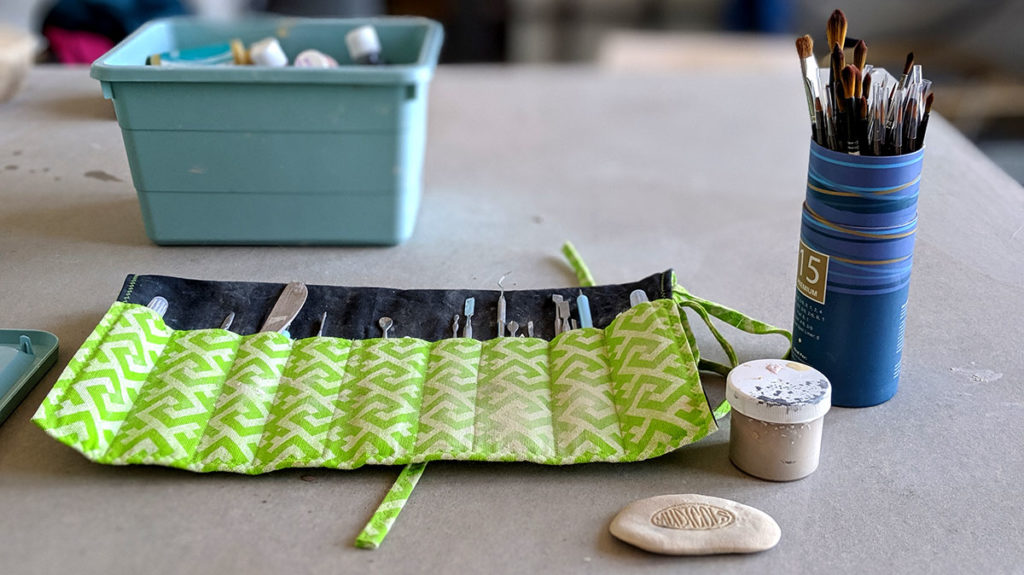Ceramics blog
Pottery Tools for Sculpting and Modeling
When I first started sculpting ceramic animals, it took me a really long time to find the right pottery tools for sculpting clay figurines. This one is a very personal journey, so you might not want to rush on a toolset that works for me. With this in mind, I’ll try and explain what I chose and why. First off, deciding on your pottery tools for modeling depends on two main factors: what you want to do, and how you work. Here we are going to talk about sculpture or modeling of small ceramics figurines (10/12 cm max) and porcelain jewelry.
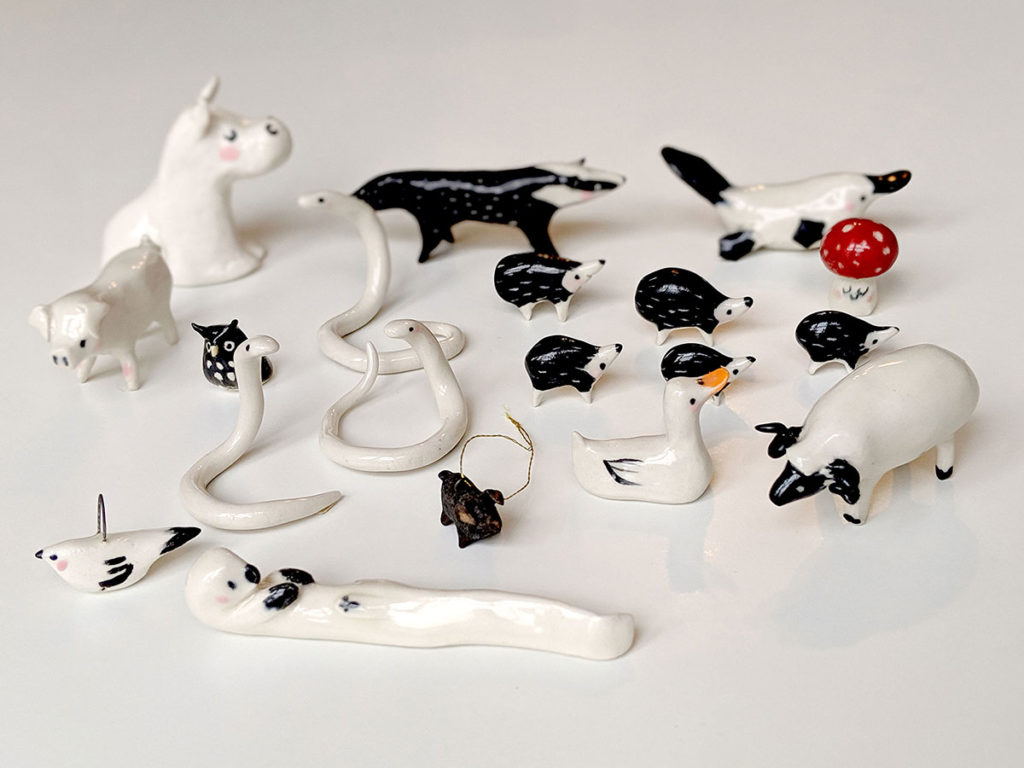
Pottery Tools for Sculpting
You have to choose the right pottery tools. Throwing wheel tools are sometimes different from sculpting tools. I divide the pottery tools intended for modeling into 4 categories. They have in common that they’re all small, I almost always go for the smallest size.
1 – Pottery Tools for Sculpting fresh clay
I have two types of tools that I use all the time. My favorite one is a wooden knife that has a flat, pointed, sharp side and a rounded, narrow side. I really use it a lot for my basic shapes and then to smooth out the animal figurines. This one is too large for jewelry though.
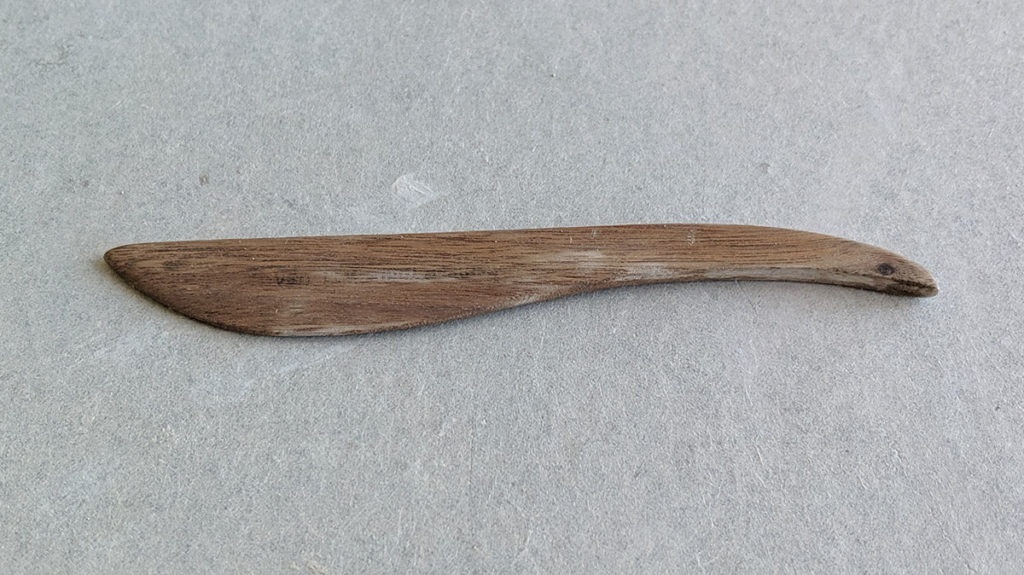
Then I particularly like my set of small stainless steel sculpting tools. It contains 12 tools which have two different sides. They are heavy enough for a good grip and the set is really very versatile. Plus, they will not rust. Downside : they really remind me of the dentist XD
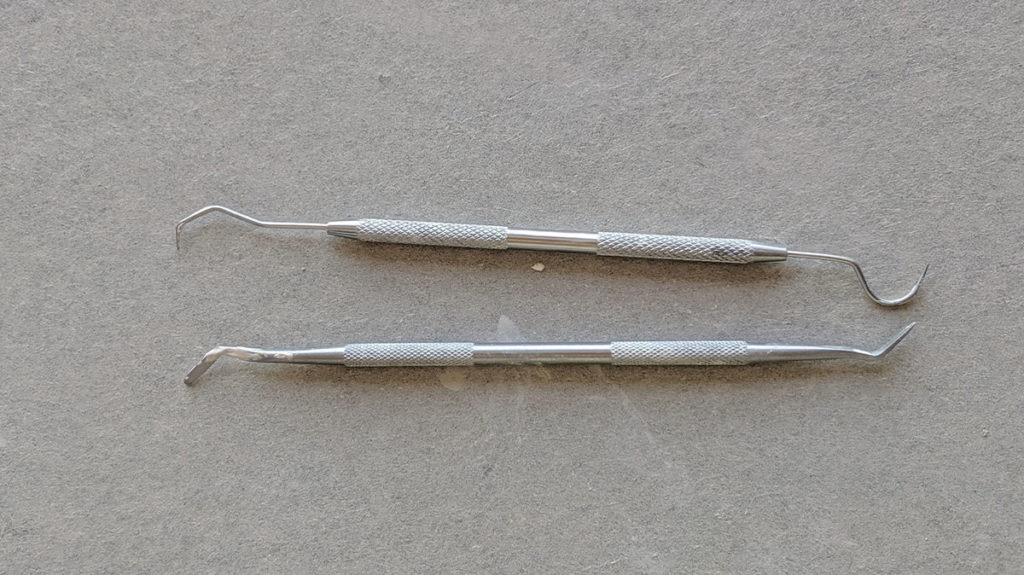
I like to have a cutter always at hand, but unfortunately the blades rust quickly in this humid environment.
2 – Fine detail pottery tools
For the finishing touches, I mainly use an ultra fine sponge from Mudtools. This one is truly magical. I love it so much I have 3, one in my bag, and one on each workspace. I’m never searching for the sponge again, yay !
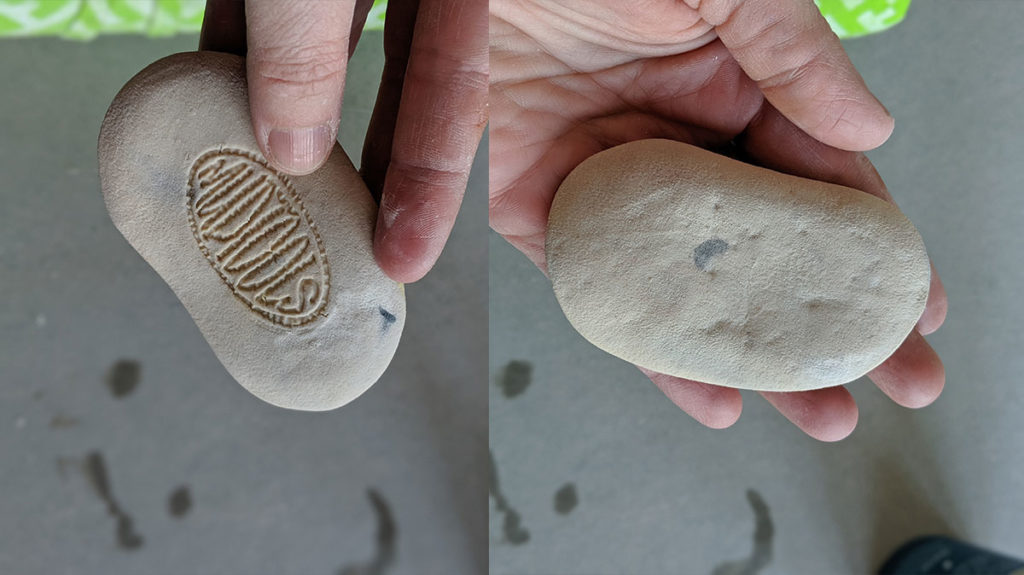
I also found these silicone brushes that seem to be used for fancy nail work. As it turns out, they are great for smoothing out tiny details one hardening glay. It’s a pretty generic set that can be found everywhere, I don’t have a brand to recommend. Your pottery shop should have them in store 🙂
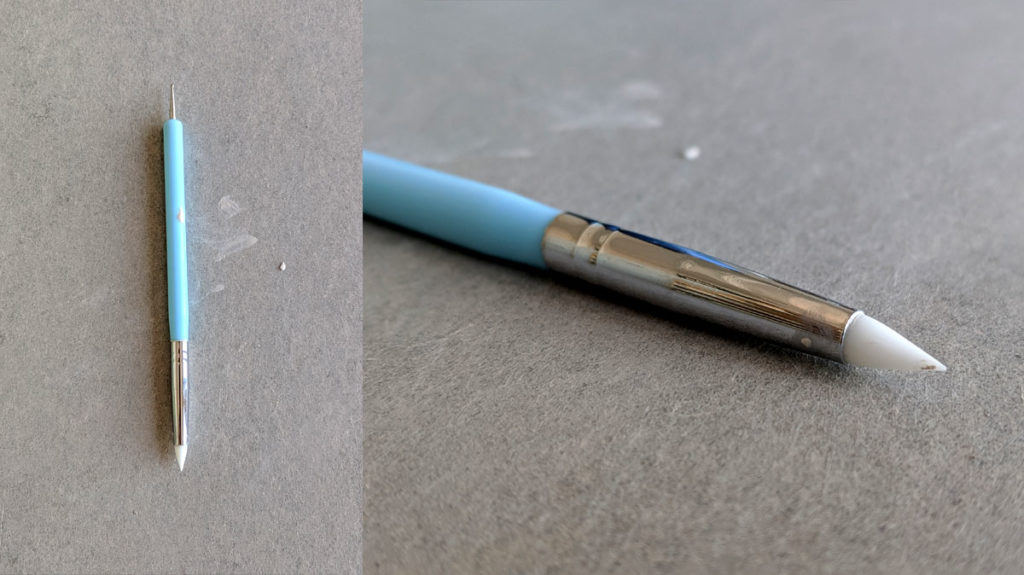
2021 Pottery modeling tools update
As one’s practice grows, the tools change. I still use all the tools stated above and I made a few additions to the crew.
I added a wonderful needle from Diamond Tools, a smaller wooden knife from Kemper, a soft rib and a lovely sponge from mudtools, and finally I had a stamp made with my logo.
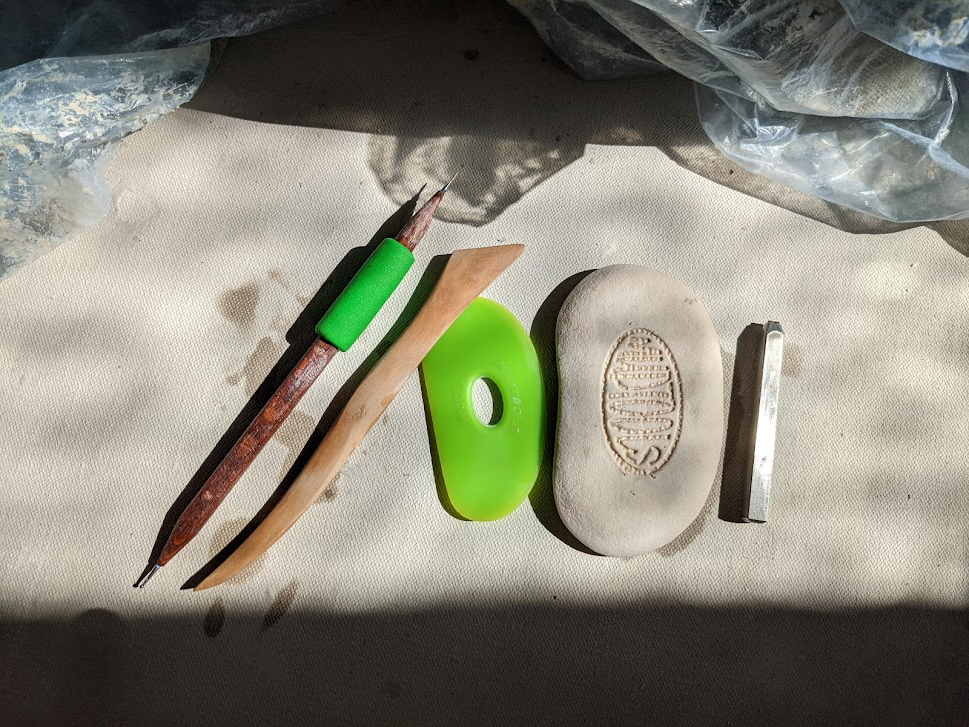
3 – Painting tools for clay
For the underglaze part, or painting if you’d like, I use synthetic brushes, mainly because I find that art does not justify smashing rare weasels 5000 km from my home (the Kolinsky mink is an animal, not a brand). Synthetic brushes also have a longer shelf life than animal hairs. This is especially true for undeglaze work because painting on clay is much harder on the brushes than painting on paper. A natural hair brush will fade in a matter of weeks to months while my synthetic hair brushes are still going strong after almost 2 years of daily use.
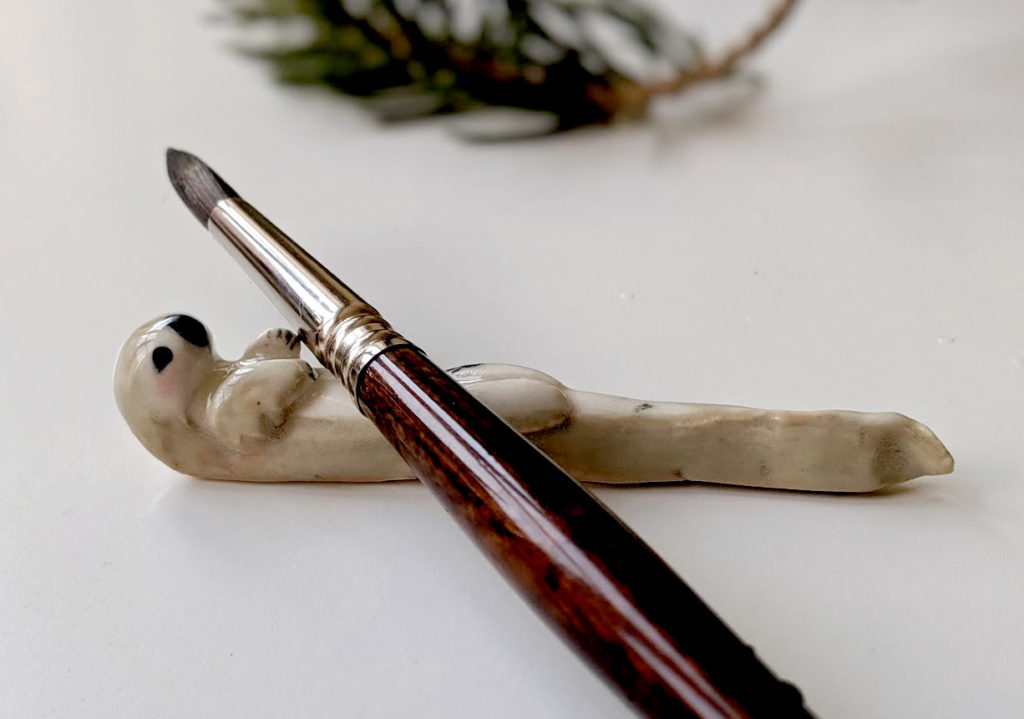
I have found a miniature painting set but it was quite basic and low quality so after a few months the brushes kind of fell appart. It’s often better to but a bit more money into a quality product than replace cheap ones every few weeks ^^ I also use the previously mentioned metal modeling tools to make corrections on my painted greenware.
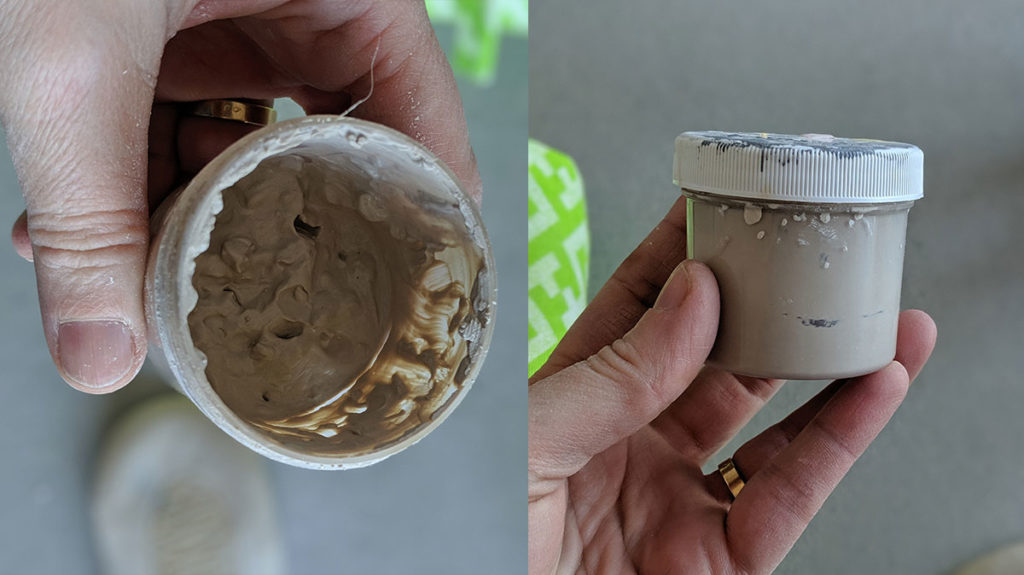
Among my tools, I also have a series of small repurposed pots and jars. I use them for slip and underglaze mixes. The slip is used to assemble pieces of clay, if you want to know more about that, you can read “Repairing bone dry clay with slip“. I also have a vinegar jar which I often use to repair breaks.
4 – Transport and store your pottery tools
To store all this, I have a fabric brush roll, hand sewn by a lovely lady, really very practical. And I also have a little box, the lid of which sometimes doubles as a paint palette. I work between my home and the studio, so being able to put everything away quickly and take everything with me is key, I don’t want to spend an hour tidying up.
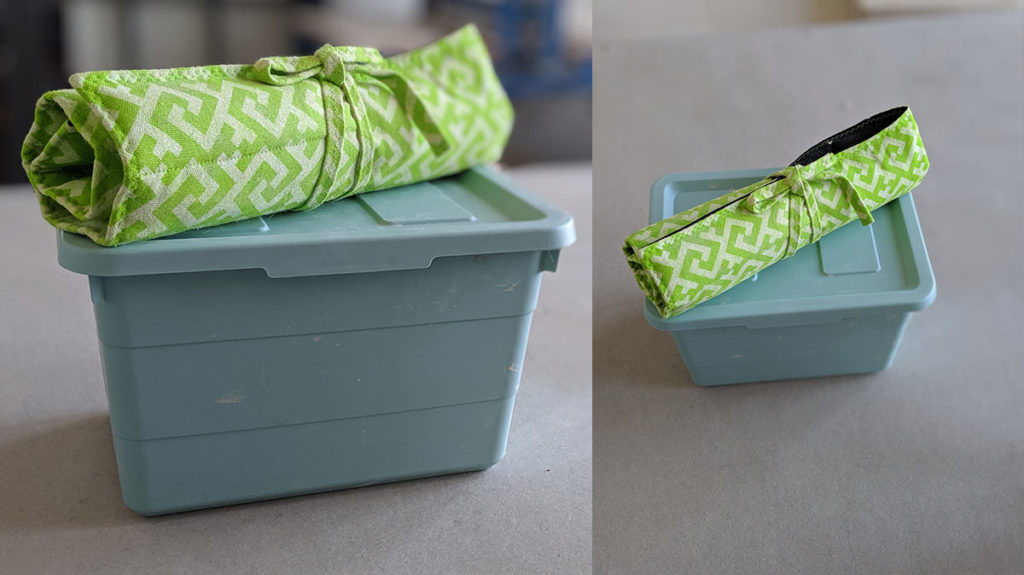
Pottery tool pricing
Taken individually, each of these tools represents a very small amount of money. However, over 2019 I invested around $ 300 in pottery tools, plus the $600 secondhand kiln. Then you can add the studio spot that I rent, the supplies for sculpting but also the shipping stuff. This is why you will try and choose the right equipment, buying only what is useful. Regarding sales, I invite you can read more about them on my “Should you sell on Etsy ?” article 🙂
All in all, I think the best way to go about it is testing the tools while you learn your craft in a class or with a more advanced potter. Then you can make a list of the absolute essentials and optional tools. Then you can decide on what to get first and safely manage your expectations, workflow and budget ^^

